Samsung AU9000 review (50AU9000): one of 2021's best cheap TVs
The Samsung AU9000 walks the line between budget 4K TVs and mid-range almost perfectly

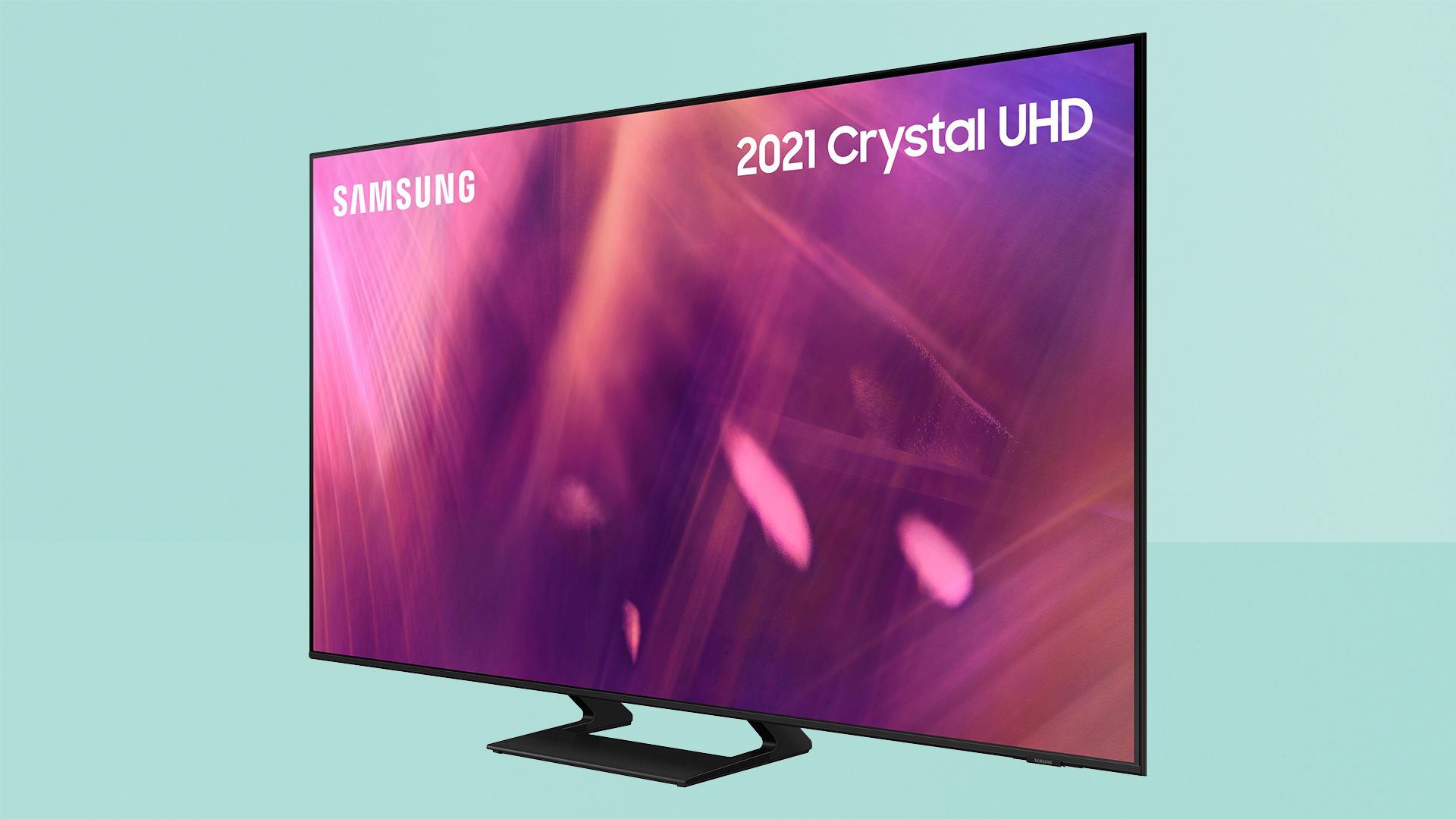
The Samsung AU9000 is a high-achieving, affordable 4K TV. For most people, most of the time, this could be all the television they’ll ever need. Just remember to budget for a soundbar.
-
+
Great picture performance from any half-decent source
-
+
Splendid Tizen smart TV interface
-
+
Gratifyingly slim frame
-
-
Sound quality is strongly at odds with picture quality
-
-
No Dolby Vision, still
-
-
Can struggle when upscaling elderly content
Why you can trust T3

In this Samsung AU9000 review, I took an in-depth look at the latest in release in the type of mainstream, midrange, mass-market television that Samsung has long excelled at producing. You're getting really impressive picture quality at a fairly low price, and great smart TV features – all the absolute essentials, basically, making it one of the best TVs under £1000.
The Samsung AU9000 model I'm reviewing here is the 50-inch version, but it's also available in 43-inch, 55-inch, 65-inch and 75-inch models. At this kind of pricing and range of screen-sizes, it’s intended to appeal to more-or-less everyone, and definitely ranks among the best 43-inch TVs and best 50-inch TVs if you're looking for a fairly low-priced option.
Despite the eye-catching price, the AU9000 is extremely well specified – there’s HDR10+ advanced HDR on board, as well as Samsung’s wholly admirable Tizen smart TV interface. Add in some next-gen games console compatibility and a notably slim profile, and the AU9000 looks, on paper at least, like a TV to be reckoned with.
That goes double over Black Friday, because we're seeing some excellent discounts on the Samsung AU9000 models. If you want to go really big with your TV in particular, the combination of price and image quality here could make it one of the best Black Friday deals for you.
Samsung AU9000 review: price & release date
The Samsung AU9000 is on sale now, and the 50-inch version we tested is priced at £699 – and if our recent experience of Samsung’s big sellers is anything to go by, that price will become even more attractive sooner rather than later. But even as it stands, this is an authentically competitive price.
Meanwhile, the 43-inch version costs £499, the 55-inch versions costs £799, the 65-inch version costs £1,099, and the 75-inch version costs £1,599. You can find the current lowest prices on all models just below.
Samsung’s often releases specific models in specific markets, and sometimes gives the same model different model numbers for different territories. So currently, we only know that the AU9000 will be on-sale in this form in the UK.
Make sure you browse our Samsung discount codes to save on your purchase.
Samsung AU9000 review: Features & what's new
First, the relatively bad (and seemingly inevitable) news: there’s no Dolby Vision advanced HDR incorporated into the Samsung AU9000. It has the HDR10+ alternative, but Samsung holds no truck with Dolby Vision and that’s a stance that doesn’t look likely to change any time soon. Which is a pity, if for no other reason than Dolby Vision’s availability on some of the world’s leading video streaming services – HDR10+ is much less widely used.
With that disappointment out of the way, though, we can concentrate on the good stuff – of which there is plenty. This is a 4K LCD TV, first of all, with edge-lit LED backlighting, which goes some way to explaining how slender it looked in my living room. It’s a prime candidate for wall-mounting as a result, but as I placed it on a table-top or shelf I was pleased to see the simple push-and-click feet have a little cable-management built into them.
Connectivity should prove ample for the majority of users. Three HDMI inputs (one of them eARC-enabled for use with any worthwhile soundbar), a pair of USB 2.0 sockets, a CI card slot, an Ethernet socket and an aerial binding post for the on-board tuner ought to keep most people happy. And there’s dual-band Wi-Fi and Bluetooth 5.2 (which is a decent upgrade on last year’s Samsung Bluetooth connectivity) for some wireless action too.
And while Samsung can’t claim HDMI 2.1 specification, all three of the HDMI inputs here go further towards accommodating next-gen consoles than the model the AU9000 replaces. Auto Low Latency Mode and AMD FreeSync are catered for, and PC gamers will be pleased to learn there’s a facility to replicate the ultra-wide 32:9 aspect ratio some games can run at, too.
One thing that’s not new, on the basis that upgrading it would be difficult in the extreme, is the Tizen smart TV interface. It’s long been close to ideal and, though every other manufacturer has undeniably upped their smart TV game to compete, Tizen continues to be a pleasure to use.
Aside from the absence of Freeview Play, it has everything you need – each worthwhile streaming and catch-up service, plus a lot of less worthwhile alternatives, with clear and easily navigated menus too. It makes for a painless experience.
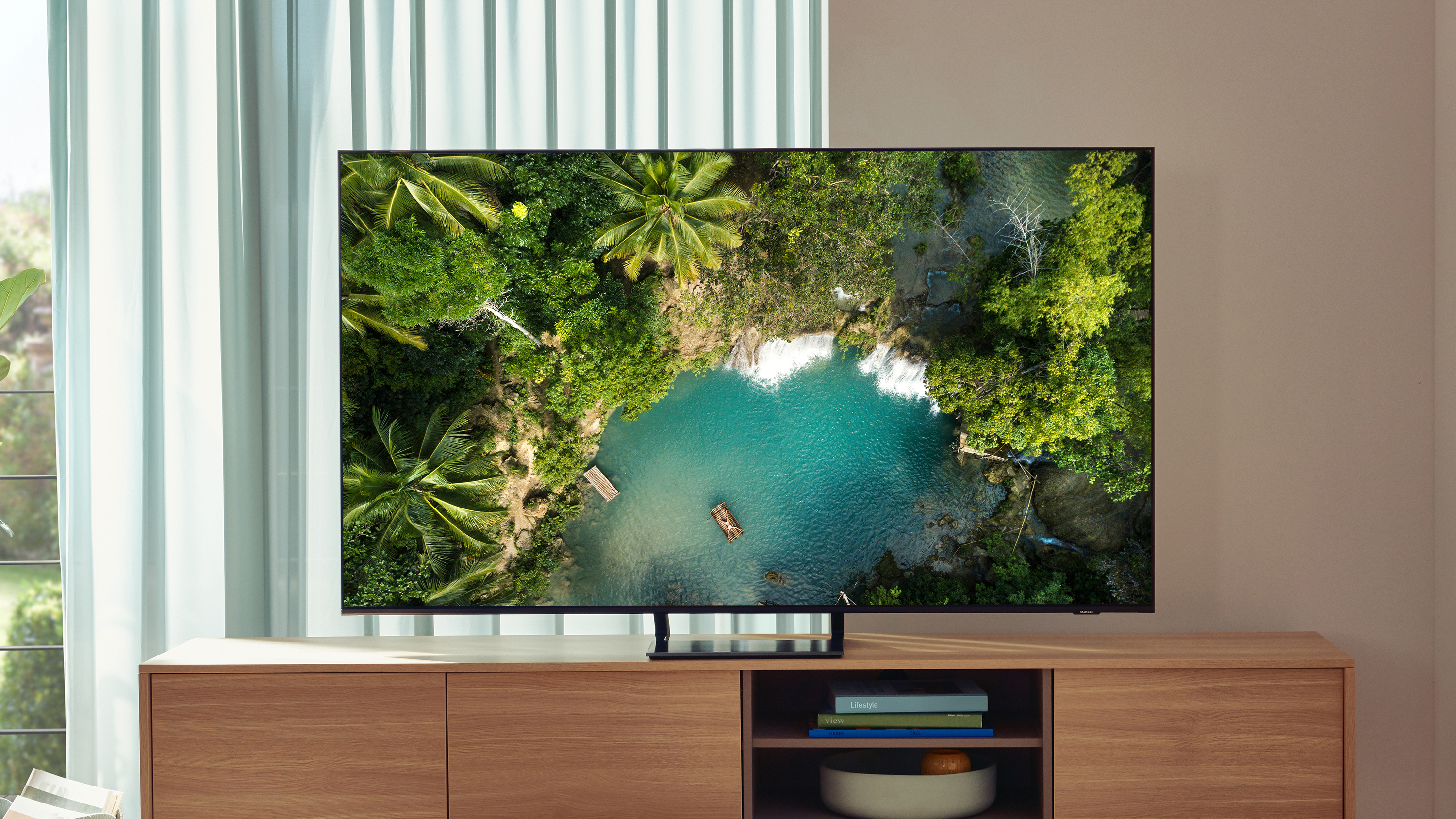
Samsung AU9000 review: Picture quality
Play to the Samsung’s strengths with some 4K HDR10+ content and the AU9000 didn't take long to impress me. It has some real and unarguable strengths when it comes to picture-making.
Contrasts, for instance, looked way more impressive than the AU9000’s peak brightness figure of 350 nits (maximum) might imply. Backlighting is controlled really well, so black tones have decent depth and worthwhile detail within them, while whites stay clean and similarly informative. I noticed this while watching blockbusters in particular, especially in the strips across the top and bottom of the screen. And because the Samsung resists blooming and haloing as well as any mass-market edge-lit LED TV around, contrasts are pretty convincing, even if they’re not as dynamic as more expensive screens can manage.
The remainder of the colour palette the Samsung can call on impressed me both with its extensiveness and its naturalness. Skin-tones are always a stern test of a TV’s abilities, and the AU9000 handled the complexities and subtleties of complexions well in my tests across a range of content, and it also does good work describing textures of skin, too.
Colours can be bold and vivid when required (I found more-or-less any sports team’s kit falls into this category), or muted and nuanced if necessary (more-or-less any sports team’s manager’s clothing, for example). Gradations made me sit up and pay attention too – so when I was watching football, the numerous almost-identical shades of green from a pitch are described and differentiated well.
After watching all sorts of content, I noticed that edge definition is also handled well, so edges are drawn confidently and with real positivity. Only when combined with properly testing on-screen motion are edges anything less than smooth, and only when on-screen motion gets properly complex does the Samsung do anything except grip movement with real determination. Only in extremis does the AU9000’s Crystal Processor 4K give the slightest hint of how hard it’s working.
In fact, you’ll really only get the processing engine to break sweat if you ask it to do a stack of upscaling. Full HD stuff is upscaled to fit the AU9000’s native resolution with absolute assurance – I thought detail levels stay high, colours are unaffected and motion stays trouble-free. Step down to some properly antiquated SD content, though, and you’ll be in no doubt the Samsung is working hard to fill its 3840x2160 panel with information.
And while it’s unlikely to be the dedicated next-gen gamer’s first choice of monitor, the casual console user won’t find too much to take issue with here. All of the picture performance positives apply to the gaming experience – yes, even motion control – and with response times hovering somewhere between 6ms and 10ms, it's one of the best gaming TVs for its price.
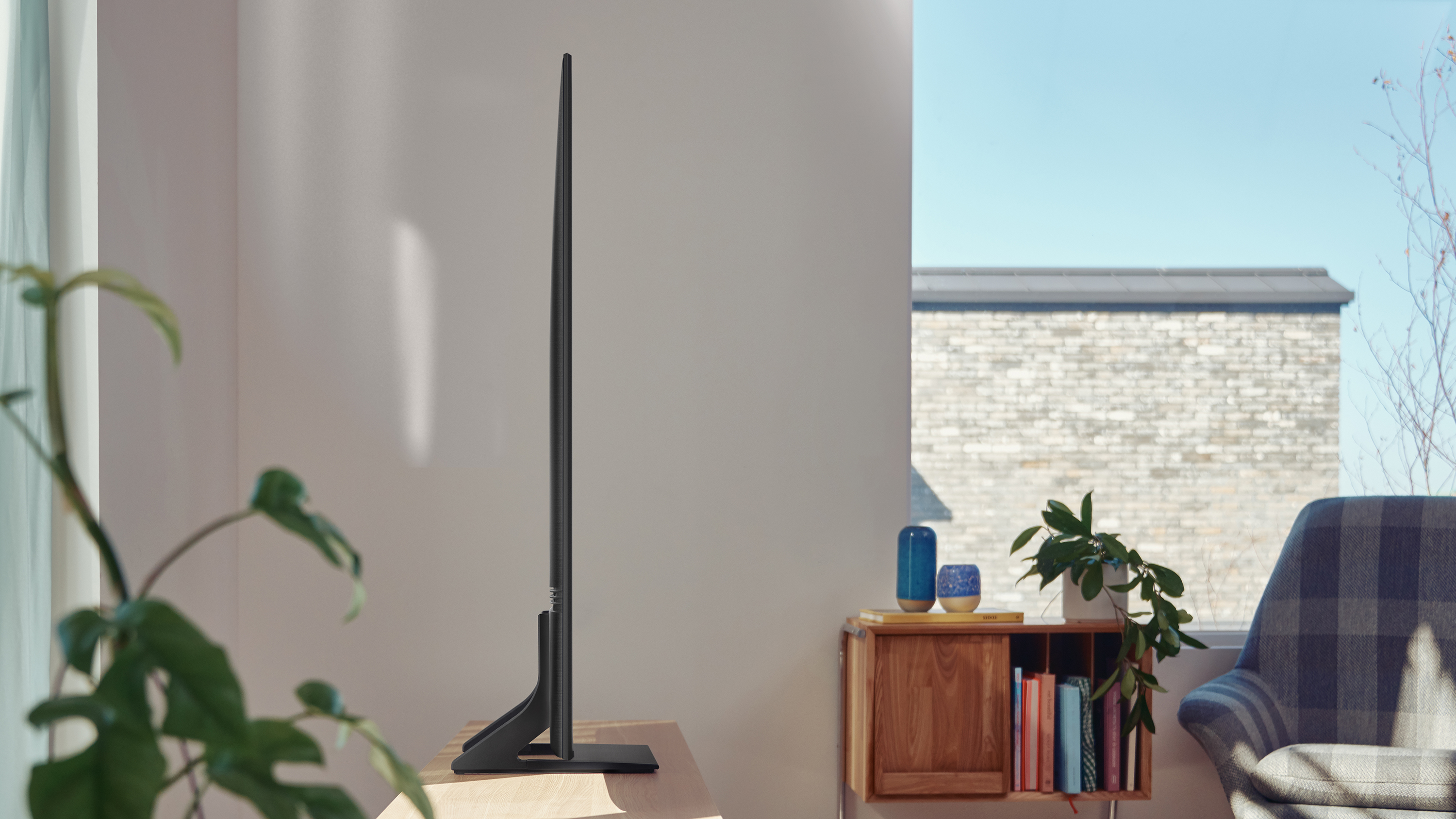
Samsung AU9000 review: Sound quality
The Samsung AU9000 isn’t the first TV to deliver a sound quite strongly at odds with the pictures it is capable of serving up, and it won’t be the last. But nevertheless, I discovered that there is something quite dispiriting about the Samsung’s sonic performance.
Let’s face it: two drivers, powered by a total of 20 watts, isn’t going to bring any cinematic audio excitement to the experience. Samsung suggests that its ‘Object Tracking Lite’ algorithms can bring a suggestion of height and width to the AU9000’s sound, but to my ears, at least, all it does is blur the point-source of the sound.
No, the AU9000 is not the dullest, or the vaguest, or the most volume-adverse, television I've ever heard – but then neither is it all that interesting or engaging to listen to.
So not for the first time and not for the last, I’d strongly suggest you budget for one of the more affordable of the best soundbars if you want to do some audio justice to the AU9000’s picture-making abilities.
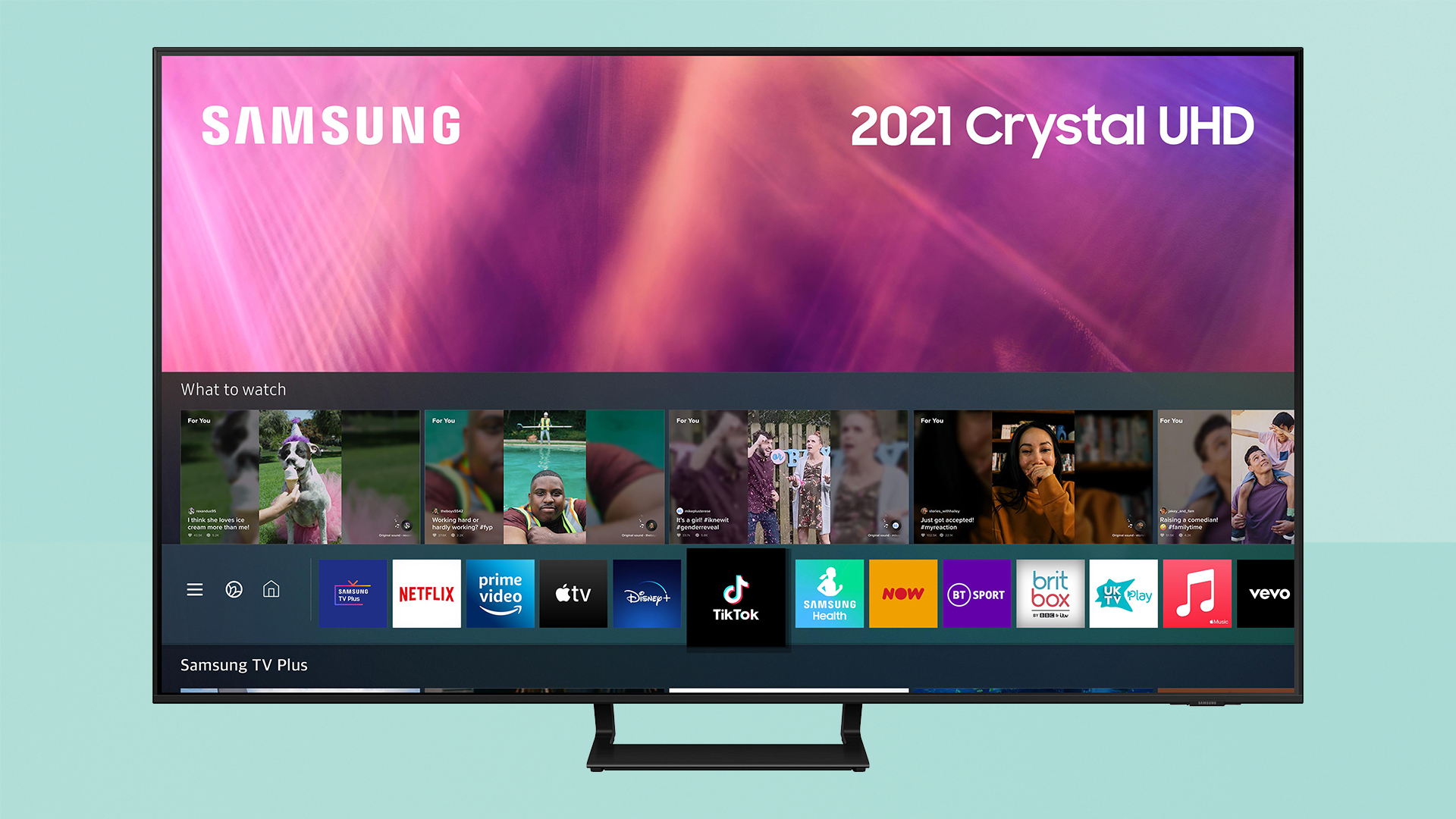
Samsung AU9000 review: Design & usability
Viewed head-on, the AU9000 is an unremarkable-looking device – and I mean that entirely positively. A narrow bezel and some minimal feet is all anyone really wants from their new TV no matter how much or how little they’re paying, right?
But in profile, the Samsung is a more interesting proposition. With a body just 26mm thick, it’s as slim as some screens costing five times this amount, or more – and it’s certainly slimmer than that big bulgy bit on that OLED TV you’ve been eyeing up. It’s a properly flat flatscreen, and though there aren’t many things people will pay more for to get less of, TV depth is one of them.
As I already observed, the Tizen operating system is exemplary – and to help you find your way around it, Samsung has equipped the AU9000 is not one but two remote controls. The first is the sort of rather thin-feeling, over-buttoned handset we’ve come to expect in this area of the market, but the second is an altogether more upmarket alternative with fewer buttons that are much nicer in terms of action.
If you don’t fancy either remote control, though, there’s always Samsung’s rather pernickety Smart Things app. Or you can use voice-control – the AU9000 is compatible with Amazon Alexa and Google Assistant.
Samsung AU9000 review: Verdict
Was there ever any doubt Samsung knows exactly what this sector of the market demands? In my opinion, the AU9000 delivers very satisfying and convincing images, sounds a bit rough, and has one of the best smart TV interfaces around. Add in some worthwhile gaming chops, an extremely slight depth and an attention-grabbing price-tag and, once again, the mass-market finds itself pandered to very well.
Samsung AU9000 review: Also consider
2021 has hardly begun where brand-new TV model ranges are concerned – which is a good thing if you’re after a bargain, because last year's models are cheap and excellent.
Take the Sony XH90, for example: for less than £800 you can buy a 55-inch, well-made and properly specified screen with Dolby Vision (as a trade-off for a lack of HDR10+, we’ll take that all day) and wide-ranging support for the all the clever features of the company’s Playstation 5 over HDMI 2.1. Here's our full Sony XH90 review.
Similarly, the Samsung Q60T was the cheapest QLED TV from the company released in 2020, and is currently around the same prices as the AU9000, but with more advanced panel tech. Here's our full Samsung Q60T review.
All of our tests are done in a real-world environment – not in a lab. You can find out more about how we test at T3 here.
Sign up to the T3 newsletter for smarter living straight to your inbox
Get all the latest news, reviews, deals and buying guides on gorgeous tech, home and active products from the T3 experts
Simon Lucas is a freelance technology journalist and consultant, with particular emphasis on the audio/video aspects of home entertainment. Before embracing the carefree life of the freelancer, he was editor of What Hi-Fi? magazine and website – since then, he's written for titles such as Wired, Metro, the Guardian and Stuff, among many others. Should he find himself with a spare moment, Simon likes nothing more than publishing and then quickly deleting tweets about the state of the nation (in general), the state of Aston Villa (in particular) and the state of his partner's cat.
-
 Leaked AirPods prototype looks like Nothing... literally
Leaked AirPods prototype looks like Nothing... literallyAnd we are here for them
By Britta O'Boyle Published
-
 OnePlus Watch 3 lands in the UK with a flurry of freebies and a huge discount
OnePlus Watch 3 lands in the UK with a flurry of freebies and a huge discountThe new titanium-clad smartwatch brings 120-hour battery life, ECG health checks, and some serious launch offers
By Matt Kollat Published
-
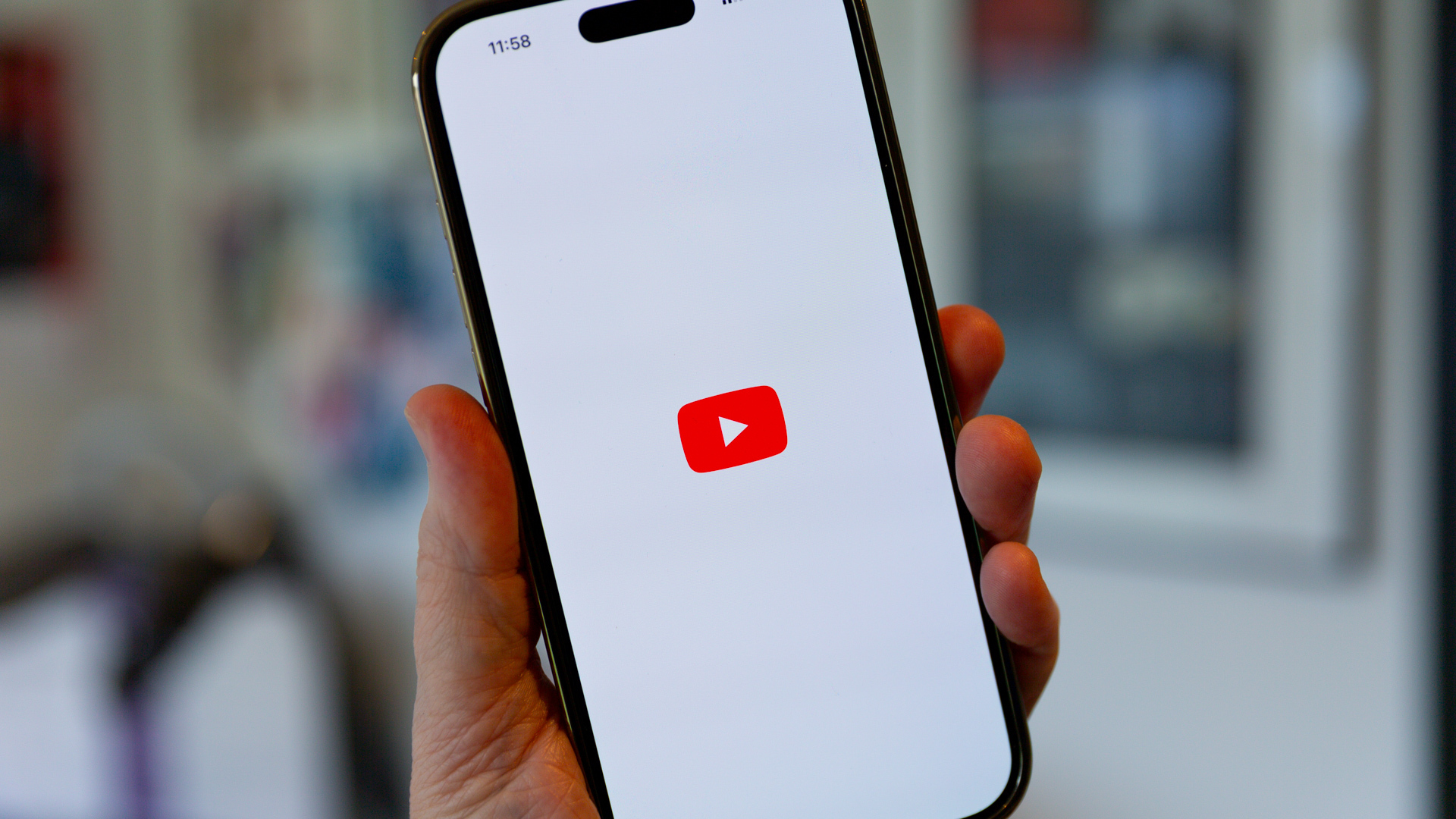 Future YouTube feature could put an end to your doomscrolling
Future YouTube feature could put an end to your doomscrollingAnd that's something we would love to see
By Britta O'Boyle Published